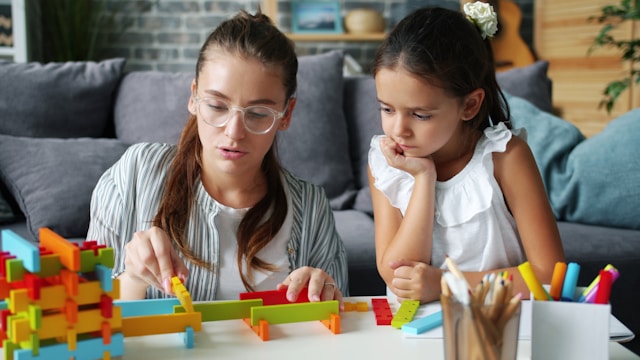Occupational therapists (OTs) help children with autism by supporting them in daily activities and helping their bodies and minds work together more smoothly. They focus on skills that make everyday life easier and more enjoyable. This can include helping with self-care tasks like dressing, eating, or brushing teeth, as well as school-related skills such as handwriting, attention, and following routines.
Occupational therapy can make a huge difference for children with autism. OTs help kids navigate everyday life, manage sensory challenges, and build skills that make them more independent and confident. From self-care routines to social play, occupational therapists provide support that touches nearly every part of a child’s day.
Understanding Occupational Therapy
So, what exactly does an occupational therapist do? Unlike some therapies that target just behavior or communication, OT looks at how a child’s body, mind, and environment work together. The goal is to help kids succeed in real-life situations—at home, at school, and beyond.
For example, an OT might notice a child struggles with tying shoes and creates step-by-step strategies to make it easier, or observe how a child moves through the classroom and suggests seating or organization changes to improve focus.
Supporting Daily Life Skills
Many children with autism find routine tasks—like dressing, brushing teeth, or handling schoolwork—challenging. OTs break these activities down into manageable steps and teach strategies to make them easier. This support helps children gain independence, which in turn boosts their confidence.
Concrete examples:
- Teaching a child a visual schedule for morning routines so they can get dressed and brush teeth independently.
- Breaking down snack preparation into simple steps, allowing the child to follow along and participate safely.
Addressing Sensory Processing Challenges
Some kids with autism are oversensitive or undersensitive to sights, sounds, touch, movement, or other sensory input. This can make certain situations stressful or overwhelming. Occupational therapists use tools like weighted or compression vests, fidget toys, and movement exercises to help children feel calmer and more focused. By improving sensory processing, kids can participate more comfortably in daily life.
Concrete examples:
- Using a weighted or compression vest during homework to help a child stay calm and focused.
- Introducing a fidget toy to help a child manage restlessness during circle time at school.
Improving Motor Skills and Coordination
OT also works on both fine motor skills (like handwriting and buttoning clothes) and gross motor skills (like balance, running, and jumping). Activities designed by OTs help children gain body awareness, improve coordination, and move more confidently.
Concrete examples:
- Practicing catching and throwing balls to enhance hand-eye coordination and arm strength.
- Using balance beams or stepping stones to improve stability and confidence in walking or running.
Enhancing Social and Play Skills
Playing and interacting with peers can be challenging for children with autism. OTs help create structured activities that teach social skills in a safe, supportive way. Through guided play and routine practice, kids can learn how to communicate, share, and build friendships.
Concrete examples:
- Role-playing a turn-taking game to help a child learn to share and wait their turn.
- Structured group activities like building a block tower together to encourage communication and collaboration.
Creating Individualized Plans
Every child is different, so occupational therapists create personalized plans based on each child’s strengths, needs, and goals. This ensures that the strategies, exercises, and tools used are the most effective for that particular child.
Concrete examples:
- An OT tailors a sensory diet with scheduled breaks, movement, and calming tools based on a child’s specific needs.
- Developing a handwriting program with adaptive grips and step-by-step exercises for a child struggling with fine motor skills.
Long-Term Benefits of Occupational Therapy
With consistent support, occupational therapy can improve independence, emotional regulation, focus, and overall quality of life. Children who receive OT often feel more confident, capable, and ready to face everyday challenges.
Conclusion
Occupational therapy offers practical, hands-on strategies to help children with autism thrive. Whether it’s learning daily routines, managing sensory input, or improving social and motor skills, OTs empower kids to reach their full potential. For parents and caregivers, exploring OT support can open the door to greater independence, confidence, and success for their child.
